Websites and apps are so common these days that it’s easy to take them for granted. But hidden behind every site design or cool new feature is a combination of code and technology that makes it work.
The person responsible for this behind-the-scenes work is called a backend developer.
If that sounds like a job you might want, we have good news: backend development is a well-paying career with a great job outlook.
But how do you get started? What skills do you need to learn?
This article introduces backend development and lets you know how to start as a developer.
Check Out Our Video Guide to Becoming a Backend Developer
What Is a Backend Developer?
Users do not directly access the backend of an application or computer system.
Technology like servers, databases, and APIs allows features such as a user interface to work.
Backend developers build and maintain that technology. Users might not even be aware of the backend developer’s work, but the website or app won’t work without it.
Backend Developer vs Frontend Developer
Frontend web developers work on the parts of the website that the user sees and interacts with. This is also sometimes called client-side or browser-side development.
Backend (or server-side) developers provide the infrastructure to back that up.
While frontend and backend developers often work together, they have a different arsenal of programming languages and skills.
For example, the languages front web developers primarily work with are HTML, CSS, and JavaScript. While coding, they have to think about the user experience. How do the images look? Is the site accessible? Does it function well on all major browsers?
Backend developers use programming and scripting languages like Python, Ruby, and PHP. They focus on concerns like whether the site is secure or how data will be managed.
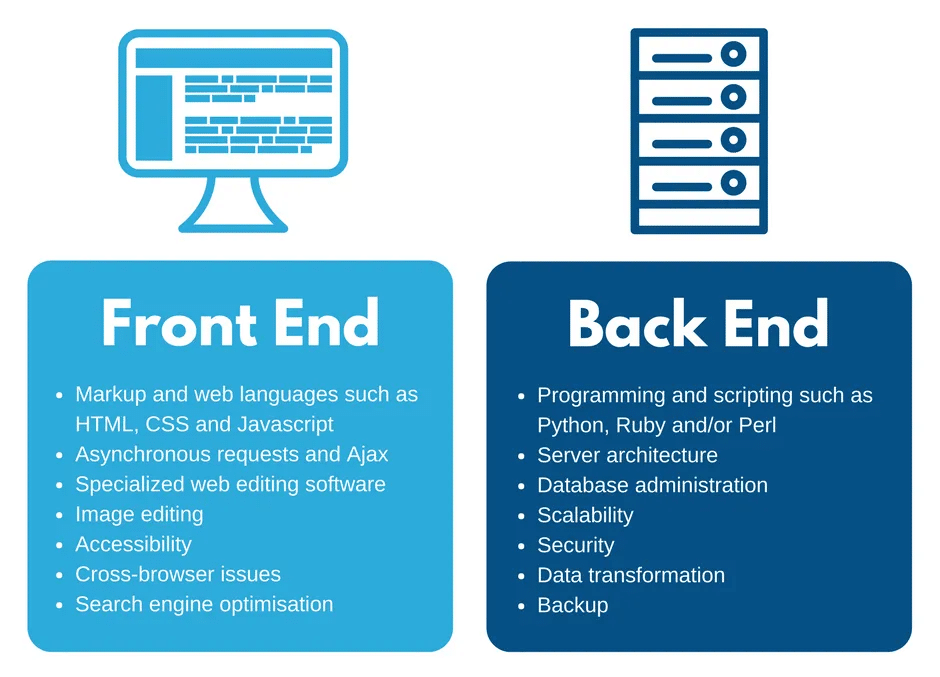
There’s another kind of developer called a full-stack developer. Full-stack means that you do both backend and frontend development.
It might sound like knowing all sides of web development is better than limiting yourself to one, but many jobs are looking for specialists.
What Does a Backend Developer Do?
A backend web developer works on the server, database, and APIs behind a web application.
The job description is different from a frontend developer’s, but the two roles work together to create work that’s both functional and user-friendly.
For example, a frontend developer creates a page on a website with a button that a customer can click to retrieve data about their past orders.
The backend developer would write the code that allows the button to fetch the right data from the database. That data is delivered back to the frontend, where the frontend developer determines how it’s displayed to the visitor.

Backend Developer Job Description
Every backend developer job will be a bit different. In general, backend developers will take on tasks like:
- Developing backend infrastructure for websites and web applications
- Maintaining existing backend
- Troubleshooting and fixing bugs
- Managing hosting environments
- QA testing
- Working with frontend developers to transfer data efficiently to client-side web applications
- Collaborating with clients and departments like product management, marketing, sales, or customer service to develop solutions
- Updating documentation on architecture, processes, and systems
Why Become a Backend Developer?
Learning to be a backend developer will take time and commitment. You might be wondering if it’s all worthwhile.
Backend development can be a lucrative and satisfying career field. Here are a few reasons why.
Demand for Backend Developers
Web development is a rapidly growing field.
Across all web development specialties, 8% job growth is expected in the next decade. That’s around 13,400 job openings per year — much faster growth than average.
Backend Developer Salary
The average salary for someone with the job title “Backend Developer” is $81,161.
Of course, you can expect to make more money as you gain experience. For example, the average entry-level backend developer makes $61,042, while the average backend developer with five to nine years of experience makes $95,000.
The average salary for someone with the title “Senior Backend Developer” is $113,687.
Backend Developer Career Satisfaction
Money and job opportunities are great, but you want a job that you actually enjoy.
The good news is that most backend developers are happy with what they do.
Backend developers rate their career satisfaction as better than average.
(In case you were wondering, the survey showed that they’re slightly more satisfied than frontend developers and just as satisfied as full-stack developers.)
Backend Developer Skills and Programming Languages
Every backend developer job requires a slightly different skill set.
The skills and programming languages listed below are in demand for backend developers and will make you a competitive candidate.
It’s also a good idea to have a basic understanding of core frontend skills like HTML and CSS. Even though you won’t use them for backend work, you’ll need to be knowledgeable enough to communicate with your frontend developer colleagues about them.
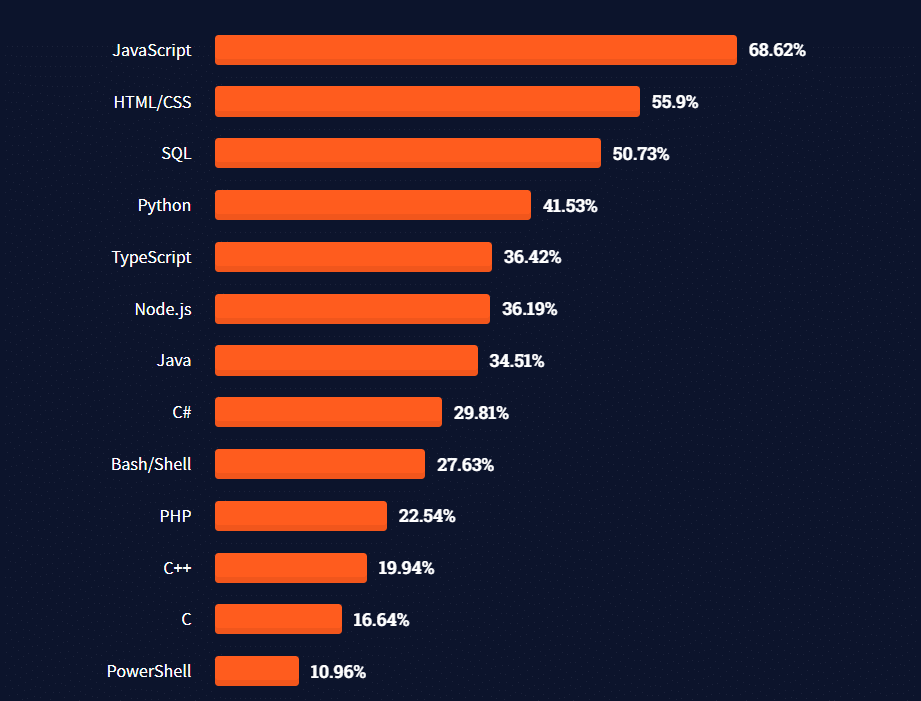
JavaScript
In terms of popularity, nothing beats JavaScript.
It’s the most commonly used programming language in the StackOverflow poll above, and it’s also the most popular language on GitHub.
One reason JavaScript tops the list is that it’s useful for both frontend and backend developers. While its most common use is as a scripting language rendered by browsers, the NodeJS runtime environment lets web developers use it for backend development as well.
That being said, it’s not as essential for aspiring backend developers as it is for frontend developers.
Start with JavaScript if you already know it from frontend work or if you want to become a full-stack developer. Otherwise, it’s more logical for a beginner to prioritize skills like Python and SQL.
Python
Python is a programming language that every backend developer should know. It’s used by major companies like Instagram, Spotify, and DropBox, and its popularity continues to rise.
Currently, it’s the second most frequently used language on GitHub after JavaScript.
Python has a relatively simple syntax that makes it easy to learn and easy for developers to communicate about their code. It supports multiple programming styles and provides clear data visualization.
Python has several frameworks that are used to simplify the development process. Learning a common framework like Django or CherryPy would also be a useful skill for a backend developer.
SQL
Standard Query Language (SQL) was released in 1979 and deemed an industry-standard language by the American National Standards Institute in 1986.
It can seem pretty clunky today, but it’s as essential for developers as ever.
SQL’s primary purpose is to interface with databases. Almost every website will require database management, and SQL is capable of handling large amounts of data. Examples of database management systems that use SQL are MySQL, MariaDB, SQLite, and PostgreSQL.
Familiarity with a few of those systems will be useful for a backend developer.
An open-source platform like MySQL provides free access to SQL database source code and can help you learn the language.
Ruby
Ruby is an open-source interpreted scripting language. It was created to be simple and efficient for developers. Its syntax is a lot like regular English, so it’s not hard to learn.
It’s not as popular as Python or JavaScript, but you’ll find plenty of jobs that require it.
When people talk about Ruby, they sometimes mean Ruby on Rails. They’re not the same thing, but they are related. Both are useful backend development skills.
Ruby on Rails is an open-source web development framework that was programmed in Ruby. It’s known for facilitating fast development and is used in over 350,000 websites globally.
PHP
Around 79% of websites use Hypertext Preprocessor (PHP) as their server-side programming language. Most notably, WordPress uses PHP.
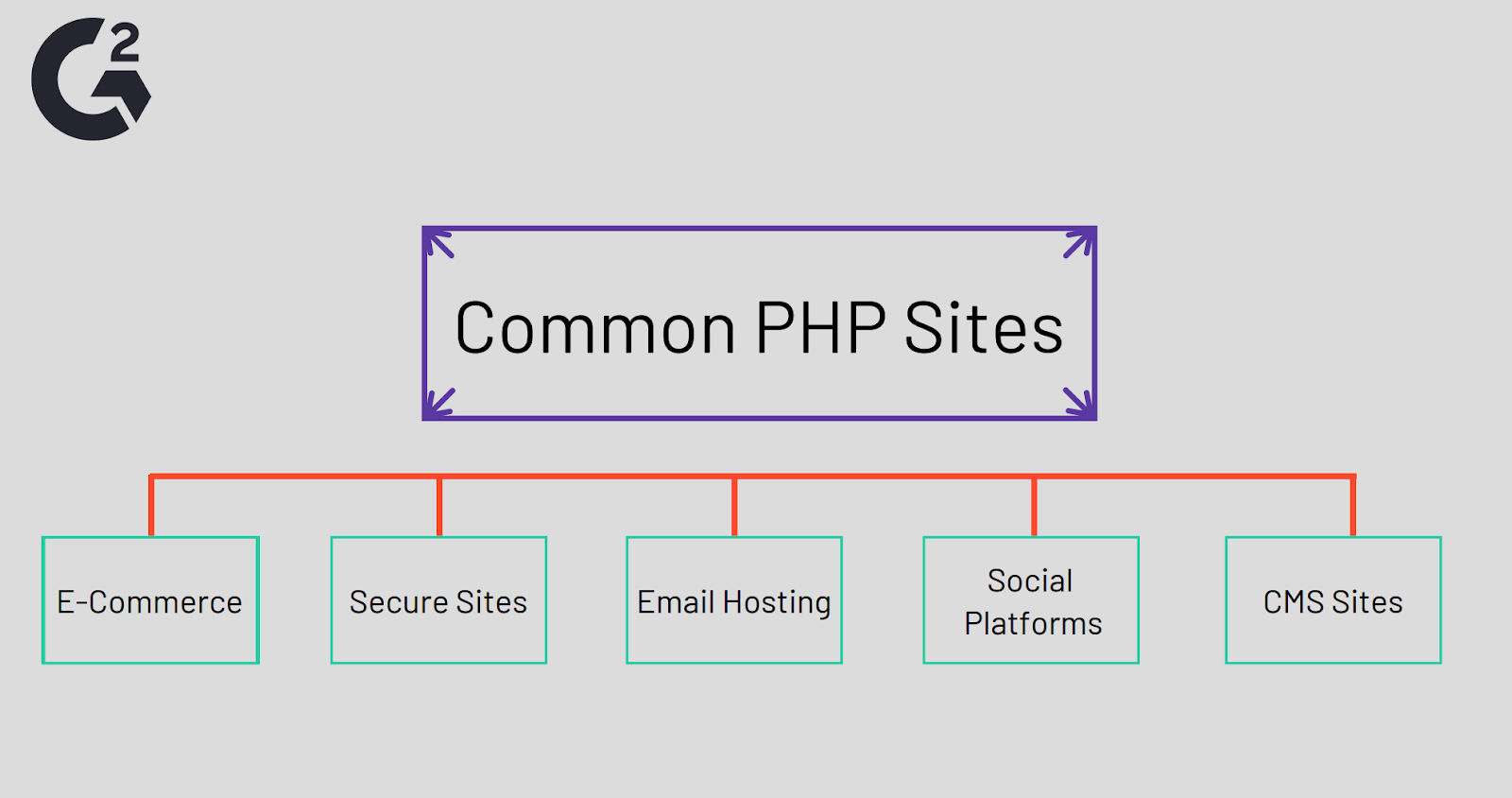
PHP has lost some ground to other languages, especially Python. In fact, people have been asking, “Is PHP dead?” for at least a decade.
Let us clear that up; it’s not. PHP is fast, powerful, and widespread in backend web development.
.NET
.NET (pronounced “dot net”) is a software development framework created by Microsoft in 2002. It includes various coding languages, libraries, and editors. The .NET language most useful to backend developers is C#, one of the most widely used languages today.
It’s used by many well-known websites like Starbucks and match.com.
While .NET isn’t as essential as JavaScript or Python, it’s a good skill to have in your toolbox as a backend developer. Microsoft provides tutorials to get you started.
Java
Java sounds like it would be closely related to JavaScript, but it’s not.
Java is a general-purpose programming language, and while it can run on a browser, it’s primarily intended for backend development.
Java isn’t as easy to learn as some newer languages, and its performance isn’t as good. Overall, its popularity is in decline. But you’ll still see it used for plenty of websites, and there’ll be backend developer jobs that require it.
Don’t count Java out yet.
SOAP and REST APIs
An API (Application Programming Interface) allows an application or service to access a resource within another application or service.
For example, APIs are used by travel booking sites that aggregate information from various airlines and hotels. The API gets data from the flight or hotel provider and displays it on the travel website. If someone books a flight, the API will confirm it with the booking site.
Two common API paradigms are SOAP and REST. As a backend developer, it will be helpful to understand both.
SOAP (Simple Object Access Protocol) is a standards-based protocol that was originally developed by Microsoft. It uses XML to make requests and receive responses.
RESTful APIs are based on the REST (Representational State Transfer) architectural style. Unlike SOAP, REST doesn’t require XML — you can obtain output in a language that works well for your project. For example, it could use CSV, JSON, or RSS.
REST is faster than SOAP, and many developers find it easier to work with. However, SOAP has higher security than REST and includes built-in retry logic to compensate when communication fails.
NoSQL
We mentioned above that a lot of developers don’t care for SQL.
There are alternatives. NoSQL refers to databases that store information in ways other than a relational table. NoSQL isn’t a language itself but a collection of database storage options that don’t use the traditional model.
The most commonly used NoSQL databases include:
- MongoDB
- Cassandra
- Amazon DynamoDB
- Apache HBase
While NoSQL databases can be useful and developers often prefer not to use SQL, NoSQL isn’t nearly as popular as SQL.
It’s a skill that looks good on a resume — but you should learn SQL first.
Content Management Systems (CMS)
Most websites use a Content Management System (CMS) to create, modify, and manage content. A CMS lets the website owner work on their own site, even if they don’t have any technical skills.
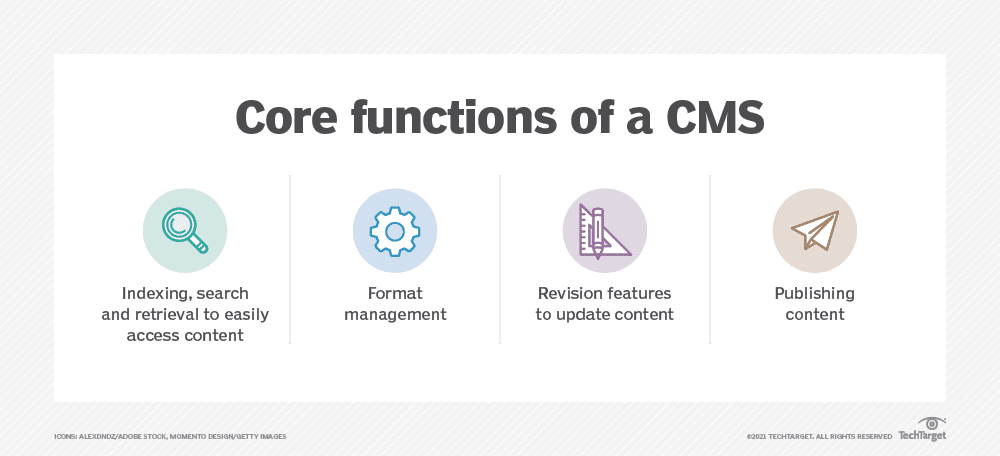
As a backend developer, you know how to create a website without a content management system. But many of the websites you work on will have one or need to have one implemented. Backend developers are often called in to add new CMS features or debug an existing CMS.
You might even create a CMS from scratch. But most of the time, you’ll work with the existing popular content management systems, including:
- WordPress
- Drupal
- Joomla!
- Magento
- Wix
It’s worth becoming an expert on developing for at least one of these platforms (Hint: we think it should be WordPress).
Version Control Systems
Version control systems help you manage changes made to the code of your project. If you work on any kind of team, you’ll probably need to use a version control tool like Git or Apache Subversion. Familiarity with one of those systems is a requirement for some developer jobs.
There are a few reasons version control is essential. For one thing, you can use a version control system to revert to an earlier version of your code if something goes wrong.
That can save a lot of time in case of a mistake. Rather than hunting down the error and manually correcting it, you can simply roll back the project to an earlier version.
Version control systems are also critical whenever multiple users are working on the same project. They keep you from ending up with conflicting versions of the application.
Git is the most popular version control management system. You can familiarize yourself with Git by installing it on your computer and creating an account on GitHub.com.
Problem-Solving Skills
Technical skills are the first thing an employer looks for in a job candidate, but knowing code isn’t everything.
Backend developers have to be good problem solvers. They need to be flexible and capable of coming up with creative solutions to issues that arise.
If you’re looking for a backend development job, you should be ready to talk to an interviewer about times you solved problems in your previous web development work.
Communication Skills
The stereotypical programmer spends their time working alone in front of a computer — and there’s no doubt that’s a big part of the job.
But communication is also an important aspect of most backend developer jobs. You’ll probably work on projects with a team of fellow developers. You may need to incorporate ideas from clients, product managers, or other stakeholders.
Be prepared to talk to an interviewer about times you successfully collaborated on a project or led a team.
How to Become a Backend Developer
For the most part, the key to success as a web developer isn’t having the right credentials but learning the right skills.
It’s possible to be a backend developer without formal training (although most have some). But you’ll need to be able to prove that you know how to code.
The first step to becoming a backend developer is making sure you have the skills listed above.
Backend Development Training
These days, there are a ton of online resources that can teach you how to code. For example, check out:
Self-study is the norm now. 40.39% of current professional web developers took an online coding course, 31.62% learned from online forums, and 59.53% used other online resources like blogs or videos.
That being said, most developers also have formal training. 80% of professional developers have completed some form of higher education.
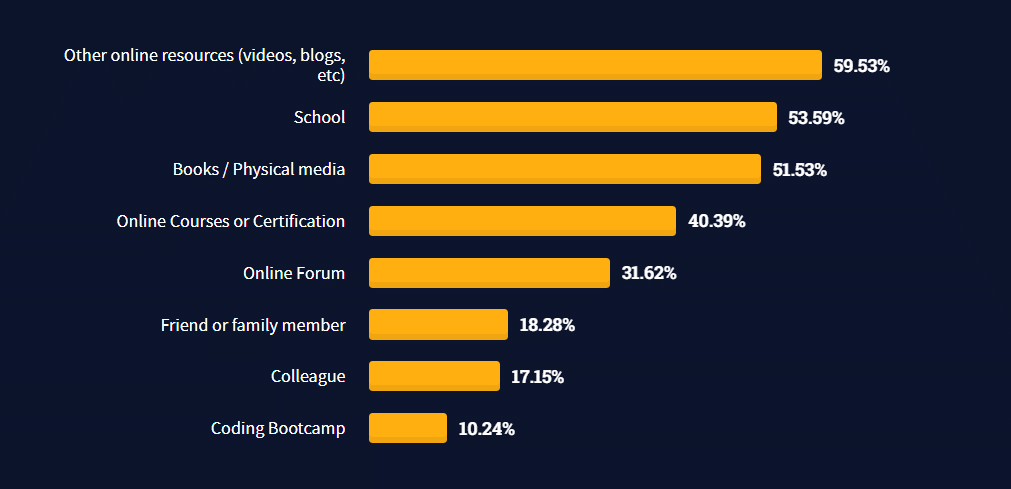
Many backend jobs require or prefer a relevant degree, but not all of them. If you’re entirely self-taught, you let your work speak for itself. Put a personal project or two on GitHub so potential employers can review your code.
Finding Jobs for Backend Developers
LinkedIn is a good place to start looking for web development jobs.
78% of developers say it’s their go-to place to look for job openings. It’s also the platform most used by recruiters.

As major job search engines like Indeed and ZipRecruiter continue to grow, several niche job boards for web developers aren’t popular anymore, but StackOverflow remains a good place to find quality development jobs.
Networking is always important. Hackathons and other tech events can connect you to your next backend developer job.
Summary
Backend development is a fun and fast-growing career field. There are a lot of reasons to love it.
As long as people need websites, good web developers will be needed. You can teach yourself the skills and the pay is good.
The best way to start down the path to becoming a backend developer is to learn a programming or scripting language. Python, JavaScript, SQL, and PHP are all skills that you’ll see in many backend developer job postings.
If you want to become a backend developer for WordPress, PHP is a good place to begin. Check out the 27 Best Tutorials to Learn PHP in 2021.


